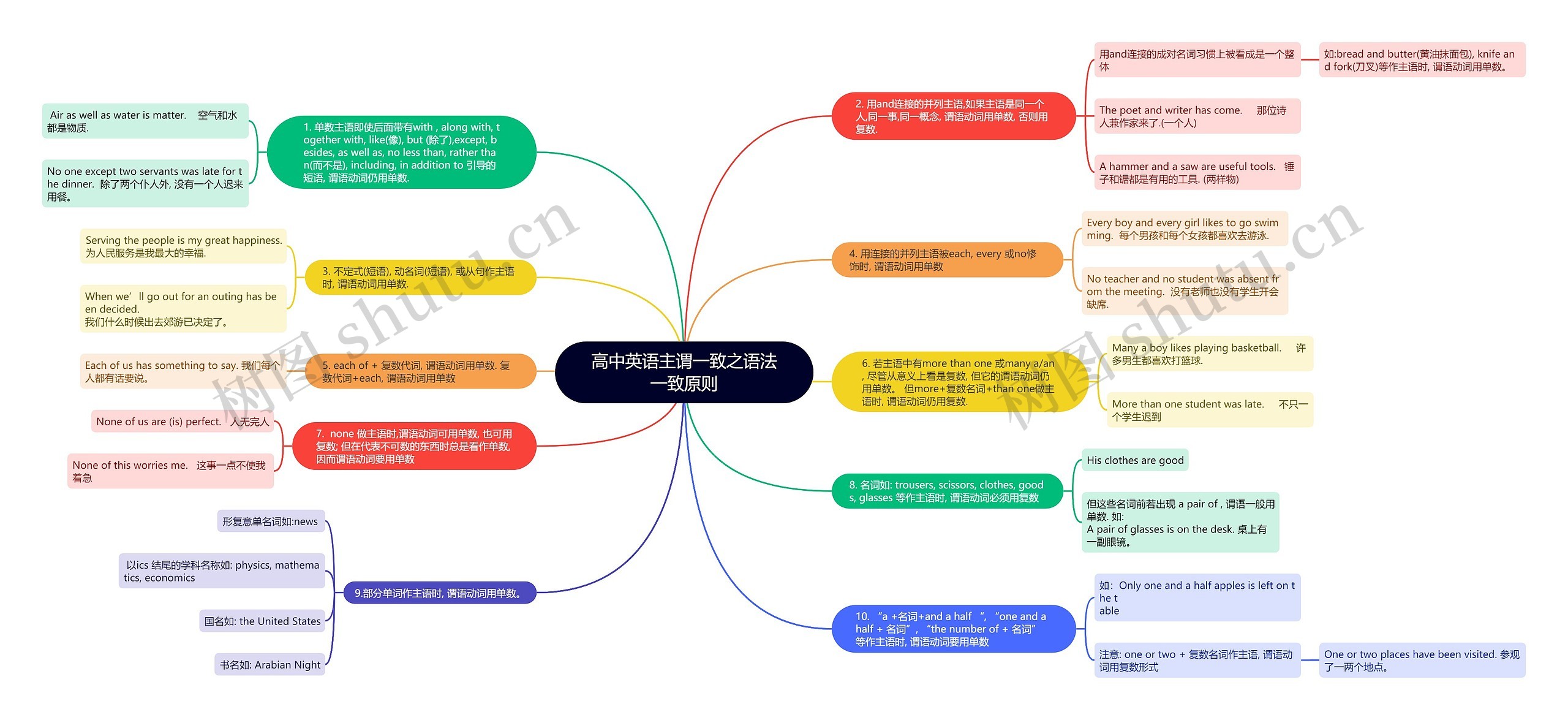2. 用and连接的并列主语,如果主语是同一个人,同一事,同一概念, 谓语动词用单数, 否则用复数.
用and连接的成对名词习惯上被看成是一个整体
如:bread and butter(黄油抹面包), knife and fork(刀叉)等作主语时, 谓语动词用单数。
The poet and writer has come. 那位诗人兼作家来了.(一个人)
A hammer and a saw are useful tools. 锤子和锯都是有用的工具. (两样物)
1. 单数主语即使后面带有with , along with, together with, like(像), but (除了),except, besides, as well as, no less than, rather than(而不是), including, in addition to 引导的短语, 谓语动词仍用单数.
Air as well as water is matter. 空气和水都是物质.
No one except two servants was late for the dinner. 除了两个仆人外, 没有一个人迟来用餐。
3. 不定式(短语), 动名词(短语), 或从句作主语时, 谓语动词用单数.
Serving the people is my great happiness.
为人民服务是我最大的幸福.
When we’ll go out for an outing has been decided.
我们什么时候出去郊游已决定了。
4. 用连接的并列主语被each, every 或no修饰时, 谓语动词用单数
Every boy and every girl likes to go swimming. 每个男孩和每个女孩都喜欢去游泳.
No teacher and no student was absent from the meeting. 没有老师也没有学生开会缺席.
5. each of + 复数代词, 谓语动词用单数. 复数代词+each, 谓语动词用单数
Each of us has something to say. 我们每个人都有话要说。
6. 若主语中有more than one 或many a/an , 尽管从意义上看是复数, 但它的谓语动词仍用单数。 但more+复数名词+than one做主语时, 谓语动词仍用复数.
Many a boy likes playing basketball. 许多男生都喜欢打篮球.
More than one student was late. 不只一个学生迟到
7. none 做主语时,谓语动词可用单数, 也可用复数; 但在代表不可数的东西时总是看作单数,因而谓语动词要用单数
None of us are (is) perfect. 人无完人
None of this worries me. 这事一点不使我着急
8. 名词如: trousers, scissors, clothes, goods, glasses 等作主语时, 谓语动词必须用复数
但这些名词前若出现 a pair of , 谓语一般用
单数. 如:
A pair of glasses is on the desk. 桌上有
一副眼镜。
9.部分单词作主语时, 谓语动词用单数。
以ics 结尾的学科名称如: physics, mathematics, economics
10. “a +名词+and a half “, “one and a half + 名词”, “the number of + 名词” 等作主语时, 谓语动词要用单数
如:Only one and a half apples is left on the t
able
注意: one or two + 复数名词作主语, 谓语动词用复数形式
One or two places have been visited. 参观了一两个地点。

